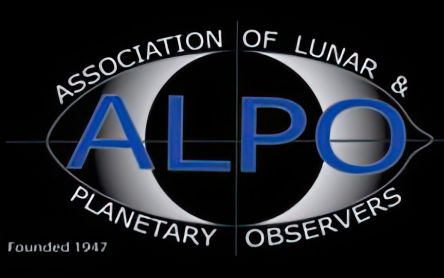Meteor Section Blog
This post discusses the expected meteor activity and lunar conditions for the upcoming week. It is focused on North American latitudes but may be used in all locations. Sky charts displaying current radiant positions are provided for early evening hours, mid-night, and the hour prior to dawn. European readers may wish to use the charts in the same article at www.imo.net for better accuracy.
To access the meteor activity outlook, click on: Meteor Activity Outlook for March 29 to April 4, 2025
We welcome hourly reports on meteor activity at: lunro.imo.usa@cox.net
Reports of individual fireballs should be filled out at: https://fireball.amsmeteors.org/members/imo/report_intro/
Meteor Activity Outlooks for observers in the southern hemisphere are available upon request at: lunro.imo.usa@cox.net
Clear Skies!
Robert Lunsford
ALPO Meteors Section Coordinator
This post discusses the expected meteor activity and lunar conditions for the upcoming week. It is focused on North American latitudes but may be used in all locations. Sky charts displaying current radiant positions are provided for early evening hours, mid-night, and the hour prior to dawn. European readers may wish to use the charts in the same article at www.imo.net for better accuracy.
To access the meteor activity outlook, click on: Meteor Activity Outlook for March 22 to 28, 2025
We welcome hourly reports on meteor activity at: lunro.imo.usa@cox.net
Reports of individual fireballs should be filled out at: https://fireball.amsmeteors.org/members/imo/report_intro/
Meteor Activity Outlooks for observers in the southern hemisphere are available upon request at: lunro.imo.usa@cox.net
Clear Skies!
Robert Lunsford
ALPO Meteors Section Coordinator
This post discusses the expected meteor activity and lunar conditions for the upcoming week. It is focused on North American latitudes but may be used in all locations. Sky charts displaying current radiant positions are provided for early evening hours, mid-night, and the hour prior to dawn. European readers may wish to use the charts in the same article at www.imo.net for better accuracy.
To access the meteor activity outlook, click on: Meteor Activity Outlook for March 15 to 21, 2025
We welcome hourly reports on meteor activity at: lunro.imo.usa@cox.net
Reports of individual fireballs should be filled out at: https://fireball.amsmeteors.org/members/imo/report_intro/
Meteor Activity Outlooks for observers in the southern hemisphere are available upon request at: lunro.imo.usa@cox.net
Clear Skies!
Robert Lunsford
ALPO Meteors Section Coordinator
This post discusses the expected meteor activity and lunar conditions for the upcoming week. It is focused on North American latitudes but may be used in all locations. Sky charts displaying current radiant positions are provided for early evening hours, mid-night, and the hour prior to dawn. European readers may wish to use the charts in the same article at www.imo.net for better accuracy.
To access the meteor activity outlook, click on: Meteor Activity Outlook for March 8 to 14, 2025
We welcome hourly reports on meteor activity at: lunro.imo.usa@cox.net
Reports of individual fireballs should be filled out at: https://fireball.amsmeteors.org/members/imo/report_intro/
Meteor Activity Outlooks for observers in the southern hemisphere are available upon request at: lunro.imo.usa@cox.net
Clear Skies!
Robert Lunsford
ALPO Meteors Section Coordinator
This post discusses the expected meteor activity and lunar conditions for the upcoming week. It is focused on North American latitudes but may be used in all locations. Sky charts displaying current radiant positions are provided for early evening hours, mid-night, and the hour prior to dawn. European readers may wish to use the charts in the same article at www.imo.net for better accuracy.
To access the meteor activity outlook, click on: Meteor Activity Outlook for March 1 to 7, 2025
We welcome hourly reports on meteor activity at: lunro.imo.usa@cox.net
Reports of individual fireballs should be filled out at: https://fireball.amsmeteors.org/members/imo/report_intro/
Meteor Activity Outlooks for observers in the southern hemisphere are available upon request at: lunro.imo.usa@cox.net
Clear Skies!
Robert Lunsford
ALPO Meteors Section Coordinator
